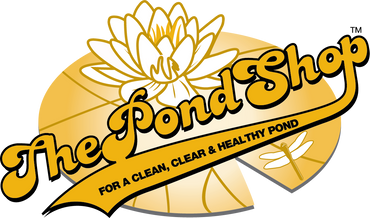Elodea

Elodea is a native submerged, aquatic plant that grows in freshwater ponds, lakes, and streams. A tenacious grower it is considered a weed due to its ability to sprout and multiply in many habitats and conditions. Elodea is often confused with Hydrilla and Egeria. Elodea has long slender branched stems that can grow up to 20 feet with whirls of three leaves around the stem. The leaves are dark-green, very small and thin. Elodea flowers from June to August, its flowers are white and violet and are produced at the tip of the stalk and rise to or above the water surface. It reproduces primarily through stem fragments. Elodea provides cover for aquatic insects and fish and serves as a source of food for pond wildlife. It is one of few plants that provides underwater habitat during the winter months. Despite its benefits, Elodea is known to develop dense long stands that can prevent light from reaching other submerged plants and limit water movements affecting the balance of the ecosystem and interfering with recreational activities.
Prevention
Elodea rapidly propagates through stem fragments dispersed by water currents, waterfowl, and human activities. When using water facilities such as ponds, lakes, rivers; make sure all clothing, boats, trailers, and any related equipment are free of plant material prior to leaving. New infestations occur when plant fragments stick to objects used in affected waters. Clean and flush watercraft to rid them of any plant contaminants. Preventing the introduction and spread of this invader is the easiest and cheapest way to control it. Nutrient availability in the sediment will feed its growth.
Biological Control
Beneficial Bacteria products and enzymes such as PZ900 feed on nutrients in the water making them unavailable for plant growth. Reducing nutrients can help prevent invasion.
Physical/Mechanical Control
Mechanical removal of elodea plants will temporarily reduce the population and their proliferation. All plants removed must be disposed of to prevent dissemination of fragments. It is imperative to monitor and clear out any new growth to avoid future reinvasion. Physical removal in conjunction with chemical control will maximize success.
Dyes and colorants reduce aquatic plant growth by limiting sunlight penetration and reducing photosynthesis.
Aeration has also been used as a mechanical approach to hinder pondweed proliferation. Increased water flow can reduce plant density. Additionally, the added oxygen will accelerate the decomposition process of nutrients that pondweeds need to live.
Chemical Control
When used carefully according to the label instruction, aquatic herbicides can be safe and effective management tools. The products that have been successful in treating elodea individually or in combination are Reward and Weedtrine D, Propeller, and Sonar AS and Sonar RTU. A nonionic surfactant Cygnet Plus should be mixed in solution with herbicides when plants are treated.
Reward is a fast-acting contact herbicide, highly effective in killing any part of the plant that comes into contact with.
Weedtrine D is a contact, non-volatile herbicide for use in controlling submersed and floating aquatics weeds. Weedtrine-D has rapid absorption and herbicide action.
Propeller is a broad spectrum, fast acting contact algaecide/herbicide. It comes in a water dispersible granule that mixes with water to be sprayed or pour. Propeller should be applied to actively growing plants or algal blooms.
Sonar A.S. is a long-acting systemic herbicide ideal for water bodies with minimal flow. Simply mix Sonar A.S. with water and spray throughout the surface of the water or pour in different spots around the pond. Sonar A.S. does not have water use restrictions.
Sonar RTU is a long-acting, systemic, easy to use herbicide. Sonar RTU does not require mixing, simply open the bottle and treat from the shoreline.
Cygnet Plus is a nonionic wetting agent, sticker, activator, and penetrant all in one. Cygnet Plus increases the effectiveness of herbicides uptake into the plant tissue.
